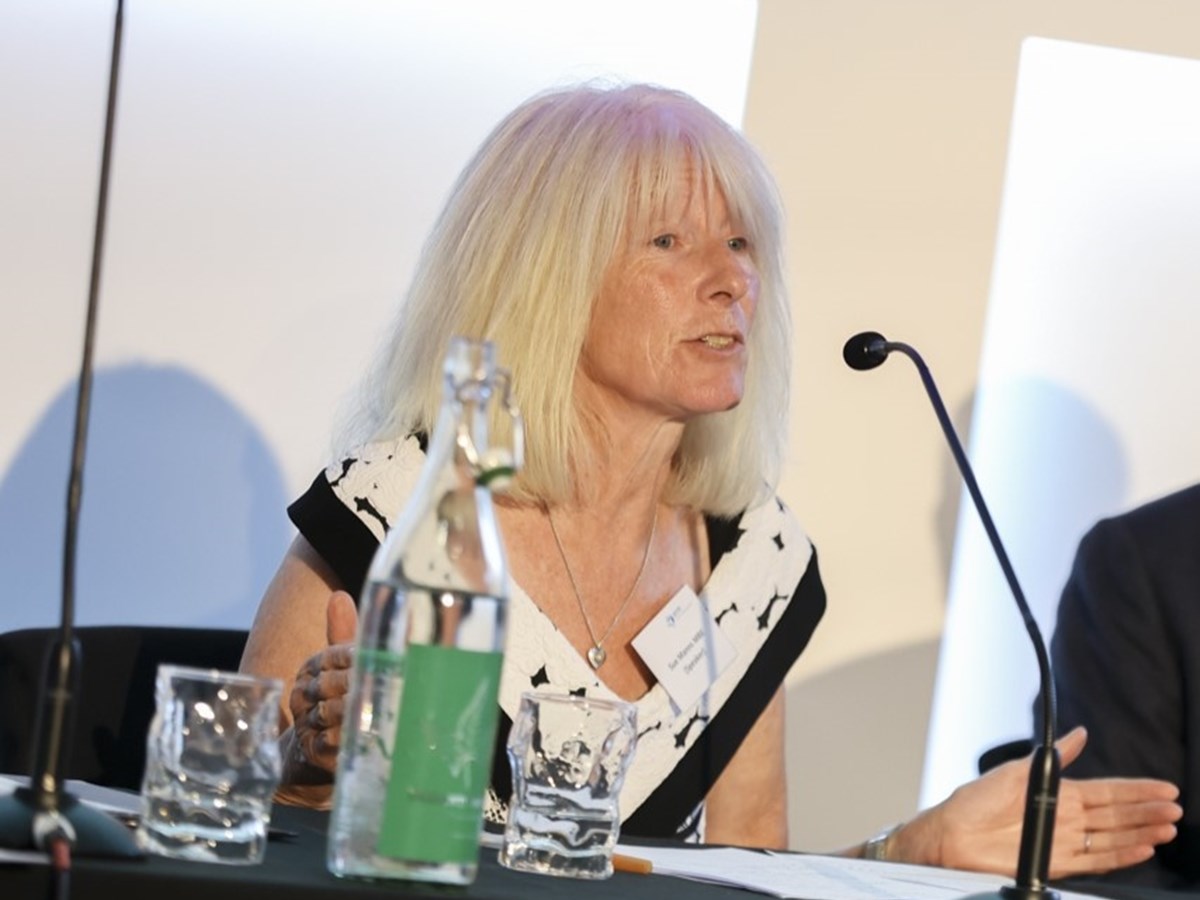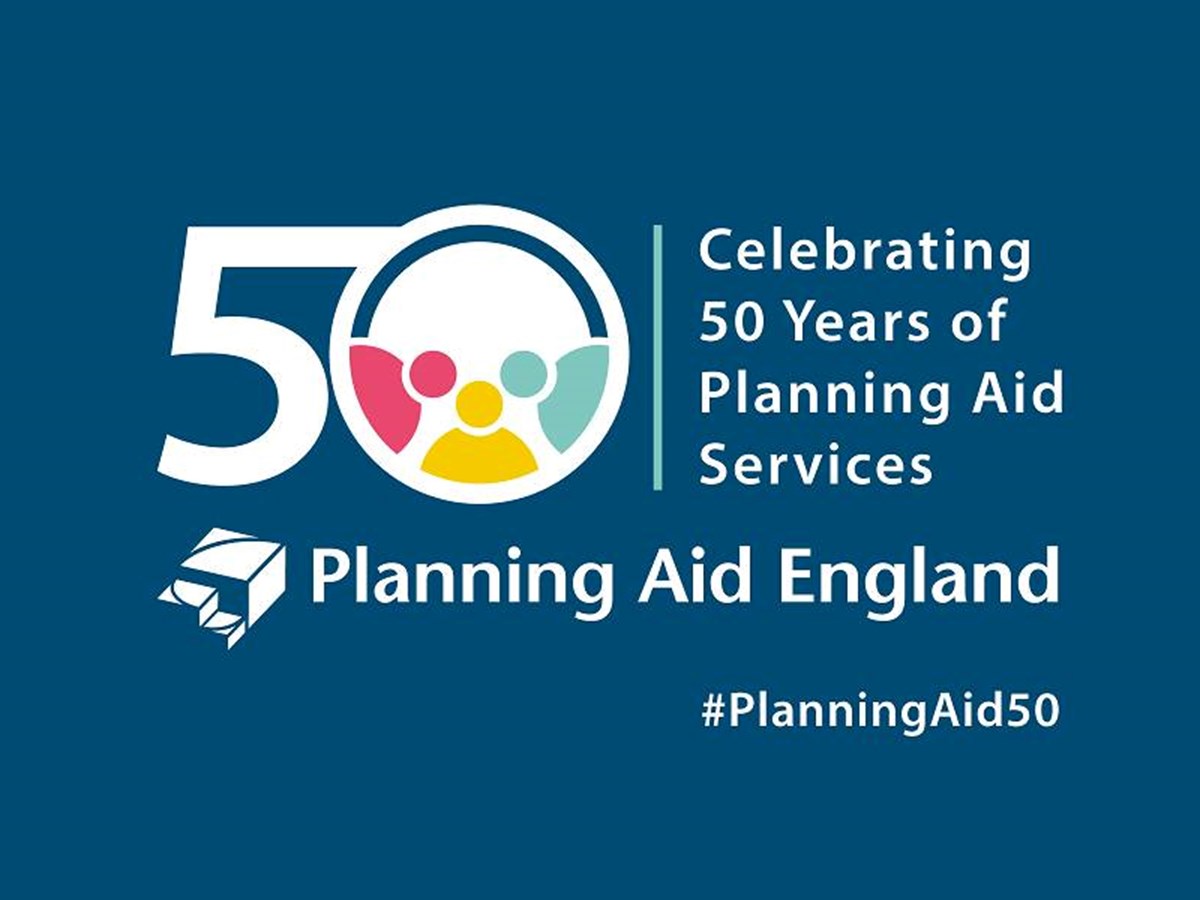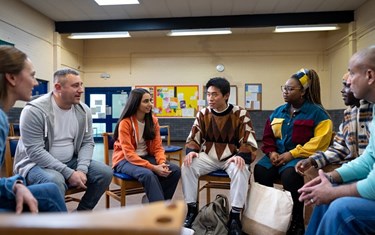As we approach the end of Planning Aid’s 50th anniversary year in England, Sue Manns considers the importance of meaningful, inclusive engagement for making well-informed planning decisions and how Planning Aid can add value within this context.
Sue Manns MBE FRTPI FRSA was President of the Royal Town Planning Institute in 2020 and was National Planner for Planning Aid England from 2009 – 2011. Sue specialises in best practice advice on planning and community engagement and is passionate about equality, diversity and inclusivity, both within the profession and in the way in which planners engage with the community.

Sue speaking at an event marking 50 years of Planning Aid

Planning Aid was started by the TCPA and RTPI Members
The planning imbalance?
Looking at many planning committee reports it is easy to feel that technical evidence is given greater prominence in decision making than views from the local community. It can seem as though the ‘planning balance’ is loaded in favour of technical matters. Yet the planning system is for and about people; it shapes the lives of those living today and the generations to come.
Technical information is relatively easy for decision makers to collect and to handle; it is factually based and scientifically presented. Community views and aspirations are much more difficult to deal with. They are often dominated by a minority, yet the best decisions are those informed by diverse views and different perspectives. This is why the Planning Aid service was established 50 years ago and it is why it is needed more than ever today.
Effective and inclusive engagement – why is it so difficult?
For some, undertaking community engagement can be an uncomfortable, time consuming, resource hungry exercise. For others it is a rewarding and fulfilling experience, as best practice exemplars from the Planning Aid service demonstrate.
People naturally do not like change, and it is a recognised cause of stress. In simple terms, the stress response, which becomes stronger the older we grow, manifests itself as freeze, flight or fight. Many people ‘freeze’ or take ‘flight’ when they see a planning consultation; they do not know how to engage effectively, there is too much jargon, it takes too long and often changes nothing. What we mostly see are the ‘fighters’, who want to protect what is important to them, but often without stopping to think matters through or to find out if what they value is the same for others. So, how and when we engage can make a real difference. We can reduce the stress response and be more inclusive; it is about the words we use, the ways we reach out, the advance notice we give.
It is widely recognised that good decisions are well informed decisions. No two people will have the same lived experiences, share the same knowledge, interests or skills; we are all different and we do not all think the same. These differences exist within communities, families and between friends and colleagues. The way we engage often fails to capture these differences. Even at a household level, it can depend on who responds.
Different views are assets to be valued, but can equally be hard for decision makers to handle. How are views which are not representative of the diversity of the community reported and weighed by the decision maker? Engagement practice needs to be inclusive and responses need to reflect the diversity of society if they are to properly inform decision makers.
Community engagement – does it need to be put in special measures?
It is fair to say that, putting aside the shining beacons of best practice to which we can all point, significant change in the way we undertake community engagement and how it supports good decision making is needed. The question is should community engagement in planning be put in special measures?
The neighbourhood planning process is an example of how inclusive engagement can be done and how it can make a difference, with the ultimate test being the referendum on the plan.
In our hearts we know what we need to do to achieve effective, meaningful and inclusive engagement and why, but all too often time, costs and resources don’t allow us to deliver in the way that we would wish. This is not acceptable and serious improvement is needed.
We need to open up a discussion on how best to drive change. As a ‘starter for ten’, is there a role for Key Performance Indicators focused on the effectiveness of a consultation? Might this help decision makers afford appropriate weight to comments or enable them to require more work? There will be many other ideas out there – after all planning is for and about our shared future and we need to get it right.
Building on its 50 years of experience, the Planning Aid service is well placed to lead this important conversation.
Planning Aid England (PAE) works with Local Planning Authorities to support community engagement in planning in more economically disadvantaged areas. To find out more, including case studies of PAE’s recent work to engage inner urban communities in plan-making and consultations on major development schemes, click here.


